Continuing with my new series of posts which will be compiled into an online version of the code reference guide, today’s post addresses the accessibility requirements for thresholds and changes in level.
~~~
Thresholds may be installed at the bottom of a door opening to deter the transmission of air, water, or sound, but changes in level at the floor surface can make it more difficult for a person using a wheelchair to maneuver through a door opening. To help mitigate these challenges, the ADA standards and ICC A117.1 address thresholds and changes in level within an accessible route. The requirements of the model codes related to thresholds are similar to the accessibility standards, with some exceptions for residential dwelling units and sliding doors. Thresholds are addressed by the ADA and A117.1 standards as follows:
2010 ADA Standards for Accessible Design
404.2.5 Thresholds. Thresholds, if provided at doorways, shall be 1/2 inch (13 mm) high maximum.
Raised thresholds and changes in level at doorways shall comply with 302 and 303.
EXCEPTION: Existing or altered thresholds 3/4 inch (19 mm) high maximum that have a beveled
edge on each side with a slope not steeper than 1:2 shall not be required to comply with 404.2.5.
~~~
2017 ICC A117.1 Accessible and Usable Buildings and Facilities
404.2.4 Thresholds. If provided, thresholds at doorways shall be 1/2 inch (13 mm) maximum in height. Raised thresholds and changes in level at doorways shall comply with Sections 302 and 303.
Exception: An existing or altered threshold shall be permitted to be 3/4 inch (19 mm) maximum in height provided that the threshold has a beveled edge on each side with a maximum slope of 1:2 for the height exceeding 1/4 inch (6.4 mm).
Note: There was no change to this section between the 2009 and 2017 editions of this standard.
~~~
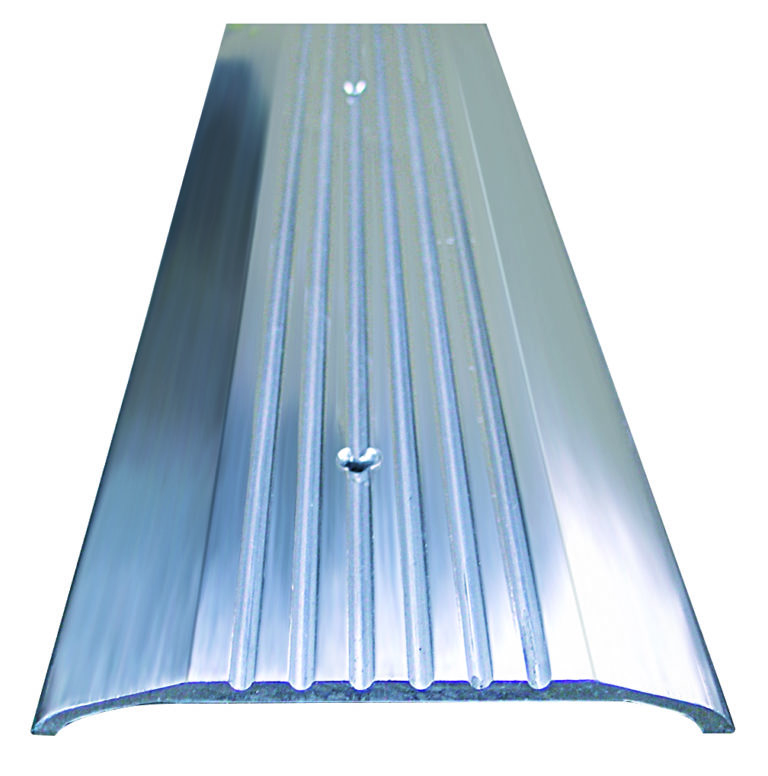 With regard to thresholds, the requirements of the ADA Standards and ICC A117.1 are virtually identical. While door openings are not required by the standards to have thresholds, if a threshold is present, Chapter 4 of each of these standards limits the threshold height to 1/2-inch, maximum (see exception below). The threshold requirements apply to both manually-operated doors and automatic doors, in swinging, sliding, or folding configurations.
With regard to thresholds, the requirements of the ADA Standards and ICC A117.1 are virtually identical. While door openings are not required by the standards to have thresholds, if a threshold is present, Chapter 4 of each of these standards limits the threshold height to 1/2-inch, maximum (see exception below). The threshold requirements apply to both manually-operated doors and automatic doors, in swinging, sliding, or folding configurations.
Existing or altered thresholds may be up to 3/4-inch in height, as long as the threshold is beveled on each side, with a maximum slope of 1:2 for the height exceeding 1/4-inch. In order to be considered an existing threshold, the installation would typically predate the adoption of a code or standard that limited the threshold to 1/2-inch. While this exception accounts for some existing conditions that would otherwise be difficult to remedy, compliance with the maximum height and slope mandated by the standards will make thresholds less likely to create a barrier for people passing through door openings.
In addition to the maximum allowable height, the accessibility standards require raised thresholds and changes in level at doorways to comply with Section 302 – Floor Surfaces and Section 303 – Changes in Level. These sections are found in Chapter 3 – Building Blocks, which describes core requirements that are referenced by other chapters of the standards. Section 302 requires floor surfaces to be stable, firm, and slip-resistant, and limits openings in floor surfaces to a size that does not allow a 1/2-inch diameter sphere to pass through (with some exceptions).
Although Section 302 requires walking surfaces to be slip-resistant, the standards do not currently include prescriptive requirements to establish whether thresholds and ramps used in doorways are required to be treated for slip-resistance. Most thresholds and ramps are grooved to provide some level of slip-resistance, and many manufacturers have optional finishes which create even more friction. These treatments may be helpful for particularly wide thresholds or ramps, or for those that would otherwise be smooth and could pose a hazard to building occupants.
Section 303 establishes the maximum slope for changes in level, dividing the requirements into three sections:
Vertical: A change in level of up to 1/4-inch is allowed to be vertical.
………………………….
Beveled: A change in level of 1/4-inch to 1/2-inch must be beveled with a slope not greater than 1:2.

Ramps: For changes in level greater than 1/2-inch, a ramp with a slope no greater than 1:12 must be used (with exceptions for some existing locations – see below).

In existing buildings where space is an issue, the accessibility standards allow a steeper slope for ramps. If the rise is 3 inches or less, the slope must not be steeper than 1:8. When the rise is 6 inches or less, the slope may be a maximum of 1:10. A ramp with a slope greater than 1:8 is not allowed.
The limitations on changes in level help to ensure that the small caster wheels on a wheelchair do not have difficulty navigating the floor surface. When the change in level is greater than 1/4-inch, the caster wheels may catch on the vertical rise. This can also become a tripping hazard, as the tip of a crutch or the toe of a shoe may contact the vertical portion. When the rise is greater than 1/4-inch, it is preferable for the entire height to be beveled, although the standards do allow a portion of the rise (up to 1/4-inch) to be vertical and the remainder of the rise (1/4-inch to 1/2-inch) to be beveled. Based on past interpretations, a threshold consisting of multiple vertical “steps” that are each 1/4-inch in height would not typically meet the intent of the standards.
The accessibility standards include additional requirements for ramps and sloped walkways, beyond what is addressed here with regard to changes of level within a doorway. The US Access Board publishes an online guide which explains the requirements of the 2010 ADA standards. Chapter 3 includes a section titled Floor and Ground Surfaces, which covers surface characteristics, flooring, openings, and changes in level. Chapter 4 addresses Accessible Routes, including a section on Entrances, Doors, and Gates which contains the requirements for thresholds. In addition, the International Code Council publishes a Commentary version of ICC A117.1, which includes explanatory information and graphics to help clarify the intent of the standard.
Many states have adopted accessibility standards that include modifications to the ADA standards and/or ICC A117.1. These requirements may be more stringent than what is included in the model codes and standards, so the applicable publications should be referenced for project-specific information. The Authority Having Jurisdiction (AHJ) can also be consulted regarding questions related to a particular location.
Resources:
- Download the ADA Standards for Accessible Design by visiting ADA.gov.
- For more information from the U.S. Access Board, visit the Guide to the ADA Accessibility Standards.
- ICC A117.1 may be purchased from the International Code Council, or may be viewed by visiting the ICC’s digital codes site.
- Refer to the whiteboard animation video: Introduction to Thresholds and Gasketing.
You need to login or register to bookmark/favorite this content.

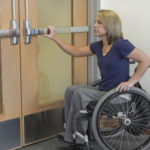

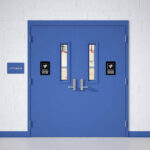
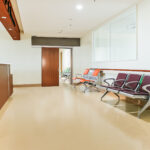


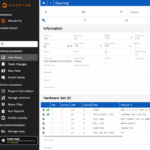

Leave A Comment